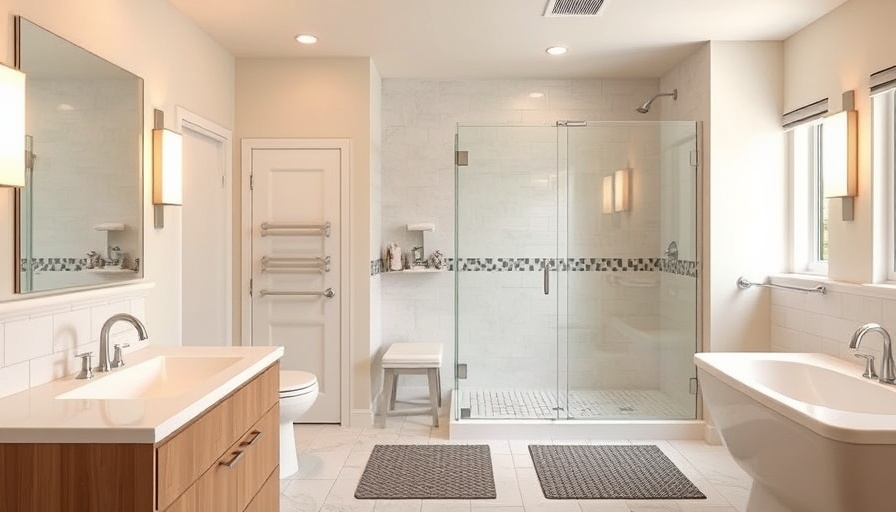
Why Accessibility Matters in Your Bathroom
Creating a bathroom that accommodates wheelchair users is not just a matter of convenience; it’s a significant step towards promoting independence and safety in daily use. For people with mobility challenges, the ability to navigate their own bathroom can greatly enhance their quality of life. By considering age-related needs or physical disabilities, we can modify our homes to facilitate ease of access and foster dignity in personal care routines.
Key Features for a User-Friendly Bathroom
When embarking on the journey to modify your bathroom, understanding key features that enhance accessibility is essential. First, consider the layout. Ideally, your bathroom should provide adequate space—typically at least 5 feet by 5 feet—so that individuals can turn around comfortably in a wheelchair. Alongside this, installing grab bars in strategic locations is crucial; these should be present near toilets and in the shower area to assist users in maintaining their balance.
Cost-Effective Design Solutions for Accessibility
Affordability shouldn't be a barrier to creating an accessible environment. One of the most effective modifications is replacing standard bathroom doors with wider options that accommodate wheelchairs. A pocket door or an outward-swinging door can free up valuable space. Another significant change is to incorporate a curb-less shower, which allows for easy entry. While this modification may require some DIY skills, the resources available online can guide you through the process with step-by-step instructions.
Enhancing Safety and Usability
Safety in an accessible bathroom is paramount. Non-slip flooring can substantially reduce the risk of falls, making it a crucial addition. Look for materials like textured vinyl or rubber that provide grip. Good lighting is equally important; install bright, consistent lighting to eliminate shadows and enhance visibility, especially in spaces like the shower or near the toilet. Adding motion-sensor lights not only improves safety but also adds a layer of convenience for users who may have difficulty accessing switches.
Consider Alternative Fixtures for Better Functionality
Choosing the right fixtures can significantly enhance usability for wheelchair users. Opt for lever-style faucets instead of traditional knobs, as they are easier for those with limited hand mobility to operate. Additionally, consider installing a handheld showerhead with an extended hose, giving users the freedom to wash without the need for assistance. These small adjustments promote a greater sense of independence.
Embracing Future Trends in Bathroom Accessibility
As we look onward, embracing innovative solutions for accessibility will only grow in importance. Technological advancements in smart home devices can significantly enhance the usability of bathrooms for people with disabilities. For instance, automated faucets and toilets that operate with motion sensors can simplify tasks and increase hygiene. Keeping abreast of these developments can empower you to implement features that are not only beneficial but also align with contemporary home trends.
Act Now: Transform Your Bathroom for a Brighter Tomorrow
Whether you are a homeowner planning a remodel or a caregiver seeking to adapt an existing space, creating an accessible bathroom can profoundly influence the lives of those using it. Embrace the modifications that foster independence, safety, and dignity. Now is the time to take action and make these important changes for yourself or your loved ones. Knowledge of how to implement these improvements opens up a world of possibilities for enhancing the quality of life within your home.
By prioritizing these modifications, anyone can make their bathroom a safe, functional, and empowering space for wheelchair users. Remember, every small change brings about positive outcomes and a renewed sense of autonomy for individuals with mobility challenges.
 Add Row
Add Row  Add
Add 




 Add Row
Add Row  Add
Add 

Write A Comment